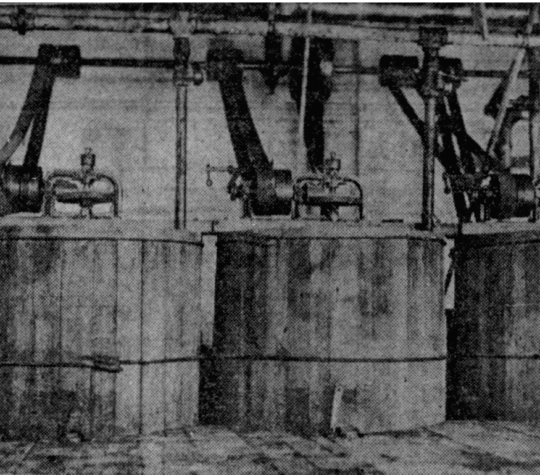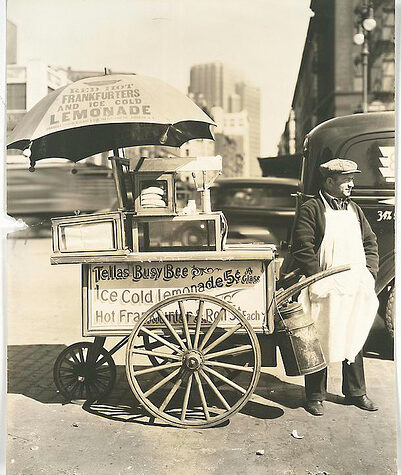Leading citizens tried to “put the lid” on vice in Lancaster in 1913. They recruited investigators to come from New York City to study commercial sex and then these investigators issued an exposé on vice in early 1914. This report was designed to embarrass the Republican administration and spur city officials to shut down commercial sex. The shocking report claimed that the investigators had found about 190 sex workers at 43 different locations for prostitution. The authors of the report admitted that they were not confident that this was even a full count.
The exposé put pressure on Mayor Frank McClain to act, but he seemed unenthusiastic, to say the least. Vice helped his political career and filled his pockets. So he delayed. He argued that the report exaggerated vice in Lancaster; and he said it would be undemocratic to close down the brothels–the people wanted vice.
Nevertheless, Mayor McClain announced a crack down.
In May of 1914 the police raided six brothels; in June they closed four more. Yet this was only ten out of more than 40 listed in the report. Men and women who worked in these houses along with some customers were arrested and fined. Most, however, did not end up going to jail. Much of the crackdown seems to have occurred informally. Police told brothel keepers or sex workers to leave town. Some people were arrested, posted bail, and then returned to their brothels, or maybe they moved their operations to nearby towns. In 1914 alone there were multiple houses that were shut down twice. In addition, there were reports that when brothels closed, sex workers simply turned to hotels and furnished rooming houses.
The crackdown was uneven, extra-legal, and unpredictable.
Let’s look more closely at one raid. Late on a Saturday night in June of 1914, police raided two houses. The first was a brothel owned by Amanda Breneman on the first block of N. Water Street. Breneman, a white woman of German ancestry born in Manor Township, bought the house in 1912, seven years after her divorce from Adam Breneman.
On the same night, Reverend Clifford Twombly, who was the leader of the anti-vice campaign, attended a raid on a second house–Minnie Bristol’s furnished rooming house on E. Fulton Street. Also known as “bed house,” a furnished rooming was a place where sex workers could bring their clients to a room they would rent by the hour or the night. Sex workers (known as inmates by the investigators) lived in brothels. They paid the madam half of their income, in addition to room and board; they also paid for medical exams and any other services in the house, such as a maid or a cook. In return, the madam provided protection for the workers by screening out some undesirable clients. A furnished rooming house, on the other hand, was not a living space for sex workers.
Bristol, a white woman, had managed her furnished room house for about seven years. An investigator noted that Bristol was missing part of her foot and walked on a “frame.” She had been injured when a train car ran over her foot and her lawsuit against the railroad was widely reported in the press (but her suit was dismissed).

When the police swept through the first floor of Minnie Bristol’s furnished rooming house, they ignored the couple in the parlor. The pair ran out the front door and down an alley on Fulton Street. Twombly himself chased and caught the man. In the midst of this chaos, Minnie Bristol had locked one officer in the dining room. He had to break down the door to escape.
Breneman and Bristol were both sentenced to three months in jail. Newspapers reported that the women were surprised that they were not just fined and released. Their shock is understandable. Why were they punished so severely when police protected or ignored so many others?
One clue to their (relatively) harsh sentence is that they both had reputations for running “bad” establishments.
One investigator described Bristol’s cheap furnished rooming house in this way:
She runs a 50 cent house, street girls and young ones too–last Tuesday two girls in short dresses came out, walked up to the corner of my house, looked up and down, beckoned another little girl–I swear they were under 16 years – came up, and they all ran toward Chestnut Street.
In addition, they both allowed two couples to use a single room. One investigator asked Bristol if she rented a single room to more than one couple at once. She said, “Certainly. It don’t take any longer than one couple and you double your money.”
Brothels that kept a low profile, that were private and “respectable,” were less likely to attract any police attention. Brothels that were loud, where solicitations were public spectacles, were more likely to be raided.
Breneman was very public in her defiance of the orders to close down. An anti-vice agent spied on her from the house across the street from her brothel. He observed the following revolving door of people at her house late at night:
1 couple left at 10:20 P.M.
1 couple left at 10:30 “ “
1 man entered at 10:33 P.M.
1 man entered at 10:55 “ “
1 man entered at 11:05 “ “
This man left at 11:35 “ “
This man entered by the alley
left the same way,
1 man entered by the front
door at 11:38 P.M.
Breneman’s unwillingness to tone down her operations–to make them more discrete–may have contributed to her arrest and sentence. Those leading the campaign against commercial sex may have been satisfied to see commercial sex in Lancaster move into the shadows, without eradicating it completely. Out of sight, out of mind.
Amanda Breneman is the focus of one episode of The Lancaster Vice Files podcast: “Amanda Breneman, Notorious Madam.” https://lancastervice.com/podcast/
Resource List:
Clement, Elizabeth. Love for Sale: Courting, Treating, and Prostitution in New York City, 1900-1945. Chapel Hill, University of North Carolina Press, 2006.
Hemphill, Katie. Bawdy City: Commercial Sex and Regulation in Baltimore, 1790-1915. Baltimore, Johns Hopkins University Press, 2022.
Jenkins, Philip. “‘A Wide Open City’: Prostitution in Progressive Era Lancaster.” Pennsylvania History, vol 65, no. 4, Autumn 1998, pp. 509-526.
Keire, Mara. For Business and Pleasure: Red Light Districts and the Regulation of Vice in the United States, 1890-1933. Baltimore, Johns Hopkins University Press, 2010.
Make your inbox more interesting. Subscribe to our newsletter for the latest scoop.




